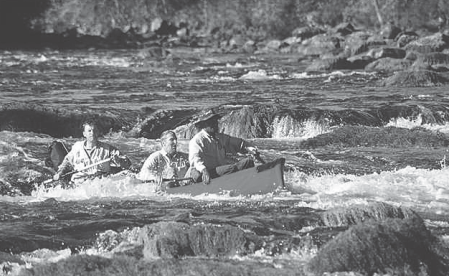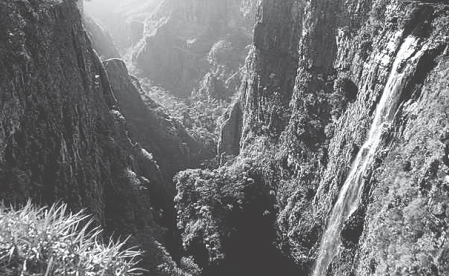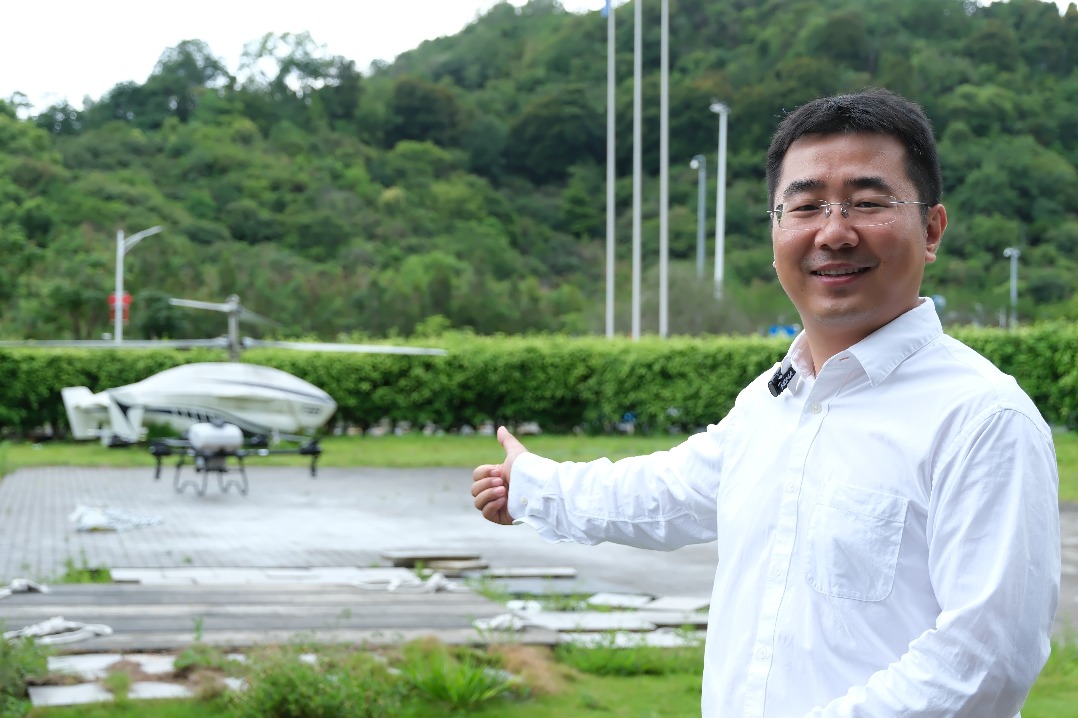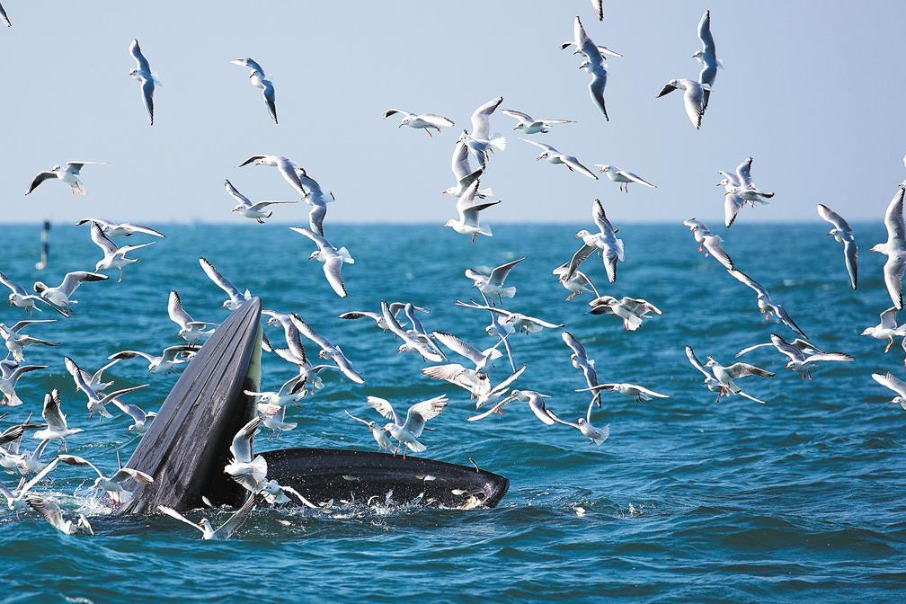LOOKING FOR THE LOST WORLD
Intrepid reporters hunt for the truth about famous novel's inspirational setting

Twenty years ago three British explorers climbed a remote plateau in Amazonian Brazil on a quest to discover the geographical inspiration for Sir Arthur Conan Doyle's classic novel, The Lost World. Published in 1912, it is still the definite story of man-meets-dinosaurs. It has spawned at least five movies, a TV series and has been imitated across various media ever since.
Now stuck at home with the COVID-19 pandemic, DJ Clark, now working with China Daily in Hong Kong and myself in the UK, revisit our findings. We discover 20 years on the prevailing opinion that Mount Roraima in Venezuela had been Doyle's inspiration was no longer the case. I had climbed Roraima and found that though it matched the novel's descriptions viewing from a distance, its summit was rain-scoured and desolate. No place for dinosaurs. Most scholars now believe our assertion that the real Lost World was our table-mountain in Brazil, but there is no reference to our expedition or the proof we brought back. It was time to put the record straight.
Our expedition was born from the quote below, written by the English explorer, Colonel Percy Harrison Fawcett in 1908.
Above us towered the Ricardo Franco hills, flat-topped and mysterious, their flanks scarred by deep quebradas. Time and the foot of man had not touched those summits. They stood like a lost world, forested to their tops, and the imagination could picture the last vestiges there of an age long vanished. Isolated from the battle with changing conditions, monsters from the dawn of man's existence might still roam those heights unchallenged, imprisoned and protected by unscalable cliffs.
Fawcett is much better known for never returning from a later expedition to look for a lost city. His descriptions of the Serra Ricardo Franco come from his ascent of the Rio Verde which runs along part of the border between Bolivia and Brazil. The Royal Geographical Society in London sent him there to arbitrate a dispute between the two countries as to where the border actually lay. The area was unexplored. After making it back he claimed to have corresponded with and shown pictures to Conan Doyle, the result of which was the author's dinosaur novel.
That was the story I pitched to the expedition's prospective members in a pub in Lancaster, England in the Spring of 2001. We would go to the Serra Ricardo Franco and show why this mountain, not anywhere else in the world, was the true inspiration for Conan Doyle's adventure.
As with Fawcett, our starting point was Vila Bela, a frontier town on the end of an unpaved highway which might one day lead to Bolivia. We hired a guide, Edevaldo Francisco "Badu", bought provisions and hired porters to carry our gear on the overland sections of the trip. The town's mayor (also its doctor), Dr André, arranged a jeep for us. He said that no one had been here before to look for the Lost World and that much of our route would be as it had for Fawcett 83 years earlier. We set off on July 15, coincidentally the same day as the explorers set-out upriver toward the Lost World in Conan Doyle's novel.
The Mountain
Just like the exploring party in Conan Doyle's novel, we could not find a route up when we reached the foot of the plateau's cliffs. In the book, the group climbed a spire of rock that stood slightly apart from the main rock wall. At the top, they felled the one tree that grew there, using it as a bridge to clamber across. Just like in the story, we came to a rock pinnacle. It looked too dangerous to attempt as we had no ropes or climbing gear so we stuck to the forested talus slope at the bottom and cut around hoping that an obvious way up would present itself. At one point, DJ slipped and started a landslide which nearly took me with it. We reached a ledge where the cliff divided into two horizontal bands, separated by a steep, jungle-covered slope and pulled ourselves up a tree trunk one at a time. At some point, the realization hit that we were above the second layer. We saw daylight ahead, then the hint of a view. I clambered over some boulders and found myself on top of the world: The Lost World. Elation and vertigo, a feeling like a film camera, trained on me, was traversing a full 360-degree arc.
We spent the next two days crossing the plateau, trekking first through open woodland and grassy plains then through bamboo thickets. Tough machete work; our water ran out. We dipped into a ravine that wound between rocky spurs, found a stream, following it as it grew. Above us, vultures rode the thermals, leathery headed and easy to imagine as pterodactyls. But though we found tracks of tapir, anteater and jaguar, the only animals that showed themselves were a trio of collared peccary wild boar which hurried away as we sloshed through the stream behind them. In the Lost World novel, all the water on the plateau drains inward to a central lake where the explorers find plesiosaurs, ichthyosaurs and huge prehistoric turtles. There are no waterfalls like Jatoba falls. There should be. The stream which we had followed, quite suddenly opened out and dropped 248 meters. We can state that height with some certainty because Badu and the porters measured it by tying three fishing lines together and lowering a bag filled with stone over the edge.
We stayed at the top of the falls for three nights before making our way back down. This was to experience the spectacle of each sunset when thousands of swifts would dive down the waterfall. They would start by gathering above the cliff edge, massing like starlings in winter, then at some imperceptible signal, swooping down all at once. We stood at the edge as the birds zipped past our heads.
The next day, we climbed down a partly closed-over trail down. At the bottom, we were greeted by a scene that we all felt should have been in the Lost World novel. The canyon, which Jatoba falls had eroded backward, narrowed to a vertical crack in the rock little more than two or three arm spans in width. The gap was flooded with clear, cold water and extended into the rock for hundreds of feet before regaining full sunlight again. We left our rucksacks at the entrance and swum our way in. As a child I used to watch a cartoon on TV called Valley of the Dinosaurs. To me, this was the same place.
The River
Fawcett called the Rio Verde "The Poisoned Hell". After two days or so of easy paddling he hit rapids, dumped his canoe and decided to walk. The riverside vegetation was so tangled that his men could carry little more than their hammocks, their guns and the theodolites they used for mapping their route. A type of weed in the river made the water taste foul. Game and fish were nonexistent. For nearly two months, Fawcett and his team (two Britons and six local porters) subsisted on palm hearts and chonta nuts. They nearly starved.
Paddling and dragging our boat upstream for three days, we soon understood why Fawcett had felt trapped by the Verde. The river runs between canyon walls, hundreds of feet high. Once committed to following it, we could only go forward or back. Occasionally we saw spider monkeys traversing the cliff faces, clambering up with comparative ease to a top that was as unreachable for us as it had been when Fawcett had followed exactly the same route. We made it as far as the fifteenth rapid, a tumbling triple waterfall where the river dropped 10 meters in about eight times that distance. "Cachoeira 15", as Fawcett noted it in his log had some significance, I am sure. It was only one of three points on the Rio Verde on a handwritten summary sheet of coordinates that I found in the archives of the Royal Geographical society in London before setting off on the trip. Was Cachoeira 15 the point where the decision was made to abandon the boat?
By now we were hemmed in by rock walls. We could not face hauling the canoe up more rapids and our forays on foot were blocked about half a mile upstream where the cliffs met the water. We made the decision to go back. We had no backup and no border to map unlike Fawcett back in 1908. We knew from reading his notes that the way ahead would only get harder. When he reached the Verde's source, he found his way blocked. One of the porters lay down and said he would rather die than carry on. Fawcett jabbed him in the ribs with a knife and made him get up. He forced his party to the top and, at last, had a lucky break, a deer sighted at the limit of his rifle's range. He managed to down it with a lucky shot. The morale boost from eating this gave everyone the impetus to continue.
From our travels up the Rio Verde and crossing the Serra Ricardo Franco plateau, we had no doubt that Conan Doyle had used Fawcett's descriptions in his novel, The Lost World. True, Roraima in Venezuela looked like the fictional plateau but with the on-the-ground details, our case was compelling.
The author is a British writer, explorer and science teacher. His books include the Explorers Wanted! series, of which Explorers Wanted! At the North Pole won a Blue Peter Book Award in 2006.
(This is the second in a series of films that have undertaken together looking at the connection between early 20th century fiction and exploration. The first "Where is Shangri-La" was published by China Daily in 2019 and went on to win a number of international awards and featured in film festivals around the world. Simon's series of books called Explorers Wanted have been translated into Chinese.)



Today's Top News
- Consumption set to continue robust growth
- Li's visit to Rio to strengthen BRICS links
- Indian pilgrimages to Xizang resume after hiatus
- Lai's shameless display of hubris at cost of well-being of island's residents
- End of USAID doesn't end overt weaponizing of US aid
- Xi urges youth, students' federations to deepen reform, innovation for new achievements






























